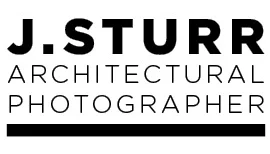A grand space with large forms; seating 15,000, screams for wide, and even wider.

I anticipated Nikon's 24mm PC-e Tilt shift would be just about the only choice, as a panorama would be one of the only options to capture this space and the forms. And -- I didn't want the perspective shift of a super wide 14mm -- and any crazy scewing which is impossible to correct in post.
So -- where do I get a 24mm PC-e --
Lens Rentals -- shipped it to my door. Three years ago I would have pretty much had to purchase it -- now today's possibilities are pretty cool.
Why
Lens Rentals -- well -- I like their web site, and commentary the owner provides about his experiences with all of the hardware he carries - for some reason they struck a chord with me over Borrow Lenes. I also think Lens Rentals is cheaper.
I knew I needed some wide shots, and the typical center straight on shot. Upon approach I summed up the easy compositions and then as I work the scene or space I can unconsciously absorb and develop a view for the next and the next etc. I rarely just shoot and shoot -- I set up and take one shot and break down the setting and move on. View points are precious and fleeting and they either come to you or
they don't -- and when the frame "pops" -- you know it's a winner.
My style is single point perspective, geometric, structured, and relies heavily upon the grid. Verticals stay vertical, images are tack sharp, and post production is minimal. All were long exposures with high f-stops to maintain near/far depth of field with some exposures approaching 30 seconds. The higher apertures protected the edge to edge sharpness and possible distortion and "purple-fringing". I wasn't too concerned with the PC-e as some consider that to be Nikon's sharpest lens ever - it was the thoroughbred 14-24mm which can really get away from you. I may have been too cautious and over-conservative, but on site thats the choice I made, an therefore needed to stay consistent.
The Panos were taken with the tilt shift in the horizontal position and then the three images were "stitched" in Photoshop - this technique worked very well.
Now on the to specifics of the 24mm PC-e.
Nikon really has to re-design this thing, or add a designer to the team. The controls are swiss-watch like - and not very friendly; too small and hard to grasp and much too fragile. I thought I was going to break it or strip a stop screw or something - I don't like to have to baby gear.
All the lobby photos were taken, once again, with the tilt-shift. And just the Shift by it self, adds a magical element as the whole scene changes. Just that alone can really make the frame come alive - it is difficult to explain and since this was my first experience with the shift, it really made an impact. The only downside is the 24mm limit - but as in good design - constraints force creativity.

I could have photographed atmosphere of the lobbys all day -- the spaces are great and the sun constantly changed the highlighting of the forms.
























